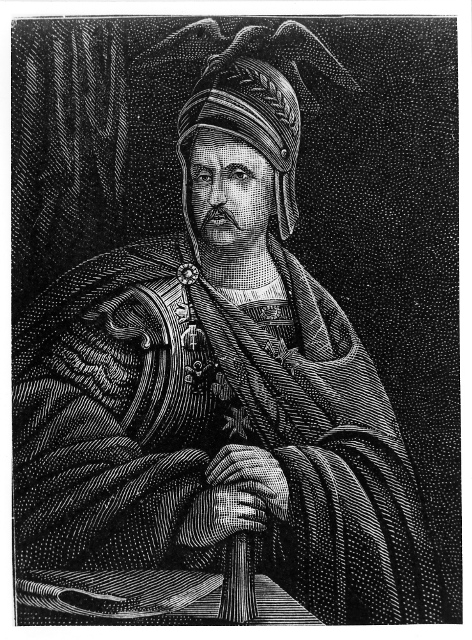
Bitter were the final years of Jan III Sobieski’s life and reign. Undoubtedly the 1691defeat at Bukowina coupled with the constantly deteriorating health (hydropsy, rheumatism, frequent apoplectic strokes, temporary acute pains) led to a certain psychological crisis. It was deepened by accumulating internal tensions caused by regular invalidations of Sejm sessions, ongoing struggle with the Sapieha family and feuds with the king’s own relatives. The situation got out of hand. Discouraged and embittered, Sobieski more and more often retreated to Wilanów.
His attitude towards the outside world and people was marked by an ever growing indifference. The king took pleasure in repeating the Russian proverb: “Let the fire burn down the earth, let the ox devour all meadows, ‘tis of no care to me after death”. Economical and provident by nature, with time he turned into a greedy miser (testified by sources), but nothing was any longer under his control. He harboured no illusions even about his own will, which in the end he never made. “Since they refuse to obey my will when alive, will they do when I am gone? ”, he observed bitterly.
Sobieski’s contemporary iconography omitted this sad stage of his life. The more surprising is the oil painting on canvas from the Wilanów collection, owned before 1939 by Adam Branicki. The piece, supplied with the following inscription at the back: “…painted at old age by Giulio Cerri”, depicted Jan III wearing a knight’s helmet, a suit of armour and a fur-lined coat, propped with both hands against a telescope (?). The painting was exhibited in 1939 in Warsaw and then was lost in the course of World War II. At present it is known thanks to the catalogue description and the earlier woodcut copy by an anonymous author, included in a prestigious publication of Hipolit Skimborowicz and Wojciech Gerson entitled Willanów. Album widoków i pamiątek oraz kopje z obrazów Galeryi Willanowskiej [Willanów. Album of views, memorabilia and copies of paintings from the Willanów Gallery] (Warszawa 1877). Since Giulio Cerri is not mentioned by any dictionary of artists, perhaps the proper name was Giulio (Giulio Cesare) Cervi (1828 or 1821–died after 1887 or 1899), an Italian stage designer, genre painter and water colourist. Such assumption is the more plausible that the discussed painting seems to have been created in the nineteenth century.
The monarch looks tired of life. The artist decorated the model’s head with a helmet by no incident as it seems; perhaps it is quite similar to the helmet placed on the dead monarch’s head by faithful Matczyński, instead of the crown that Sobieski’s relatives refused to hand for the occasion. As an eyewitness of Sobieski’s death, Bishop Andrzej Chryzostom Załuski put it, “it seems to me that we are all descending with him to the grave. The good name of our homeland was with him and with him it perished. By his wearing the royal crown he lent more splendour to the royal dignity than assumed from it. Legitimate are my fears that with his death the bravery of Poles shall also pass away”.
An anonymous Warsaw engraver, based on a drawing by Giulio (Giulio Cesare) Cervi: Portrait of Jan III Sobieski at an advanced age, woodcut, publ. 1877.
We would like to inform that for the purpose of optimisation of content available on our website and its customisation according to your needs, we use information stored by means of cookies on the Users' end devices. You can control cookies by means of your Internet browser settings. Further use of our website without change of the browser settings means that you accept the use of cookies. For more information on cookies used by us and to feel comfortable about this subject, please familiarise yourselves with our Privacy Policy.
✓ I understand